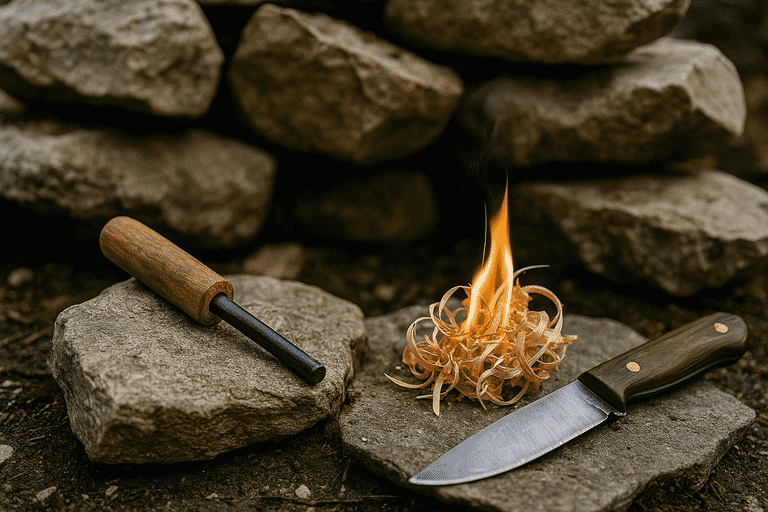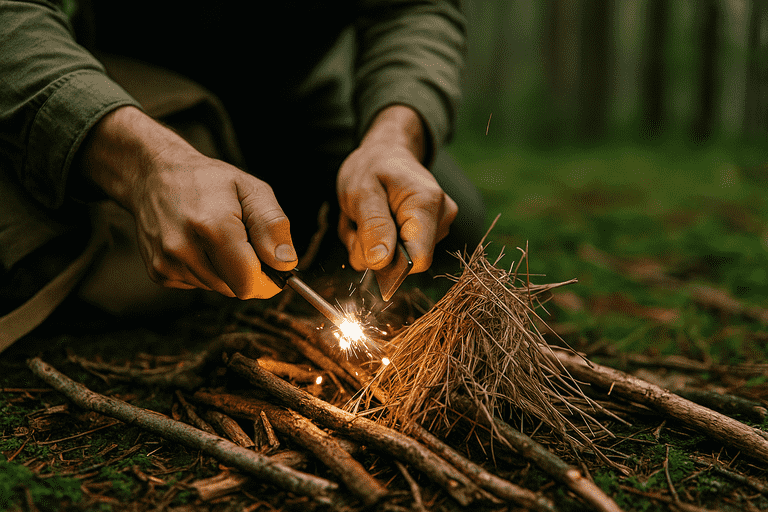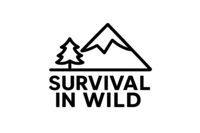Starting a fire in the wild is more than a skill—it’s a vital form of self-reliance. A well-made bushcraft fire starter can ignite tinder in damp, cold, or windy conditions, offering warmth, protection, and the ability to cook food. For instance, unlike matches or lighters, quality fire starters work even when wet.
In addition, fire connects us to primitive instincts and survival heritage. It’s one of the core components of bushcraft, and understanding how to reliably start one gives you a sense of true control. Therefore, if you plan to spend time in the wilderness, mastering this skill is not optional—it’s essential.
Choosing the Right Bushcraft Fire Starter for Your Kit
When selecting a bushcraft fire starter, consider reliability, ease of use, and durability. For instance, ferrocerium rods produce intense sparks and work in all weather conditions, making them a favorite choice for bushcraft enthusiasts. In addition, magnesium blocks can serve as both a spark source and tinder if scraped properly.
However, no fire starter is perfect for all situations. Flint and steel offer a traditional method, but require practice and dry tinder. Solar fire starters need sunlight, while battery-powered plasma lighters rely on electricity. Therefore, choose a tool that aligns with your skill level and environment.

How to Use a Bushcraft Fire Starter Effectively
Using a bushcraft fire starter involves more than just striking sparks. For instance, a successful fire needs a proper tinder bundle—dry grass, bark, or cotton infused with petroleum jelly are all effective. In addition, consider airflow and structure. A teepee or log cabin design helps the fire grow and spread efficiently.
Bushcraft Classes: Rediscovering Nature Skills
Angle and pressure matter when striking. Practice until you produce consistent, hot sparks. Therefore, don’t just toss a fire starter in your kit—train with it under various conditions. Your goal is to make fire creation second nature, regardless of weather or fatigue.
Different Types of Bushcraft Fire Starters and Their Pros and Cons
There are multiple types of bushcraft fire starter tools, each with its own strengths. For instance, ferro rods last thousands of strikes and are nearly indestructible. Magnesium blocks, when scraped into powder, ignite quickly with a hot spark. Flint and steel are lightweight and classic but require precise technique.
In addition, modern tools like plasma lighters or piezo igniters offer convenience but depend on batteries or fuel. Natural methods like bow drills are effective but energy-intensive and hard to master. Therefore, always carry a primary method and at least one backup. Redundancy in fire-starting is survival wisdom.

Bushcraft Fire Starter Practice: Training for Real-Life Conditions
A bushcraft fire starter becomes valuable only through regular use. For instance, striking sparks in ideal conditions isn’t enough. Train in wind, snow, rain, and darkness. In addition, practice one-handed techniques in case of injury and test different tinder materials you find in nature.
Bushcraft Survival Kit: Must-Have Items for Safety
Set challenges: build a fire within five minutes, start one using only foraged materials, or light a fire after soaking your gear. Therefore, you won’t panic when things go wrong. You’ll already know what works and how to adapt. Fire-building becomes instinctual through repetition and exposure.
Common Mistakes
Many beginners misuse their bushcraft fire starter by relying on poor tinder or incorrect technique. For instance, wet or green materials won’t ignite, no matter how many sparks you produce. In addition, striking at the wrong angle or with weak pressure limits the heat and range of your spark.
Why Cheap Survival Gear Can Still Save Your Life
Another mistake is assuming a fire starter will work out of the box without practice. Ferro rods, in particular, often have a protective coating that must be scraped off. Therefore, spend time getting familiar with your tool at home—before your survival depends on it.
Maintaining and Protecting
Proper care ensures your bushcraft fire starter performs when you need it most. For instance, keep it dry in a waterproof pouch or sealed container. Moisture won’t ruin most ferro rods, but dry tinder is essential. In addition, clean off soot, dirt, and residue after each use to maintain spark quality.
Inspect your fire starter regularly. Look for cracks, corrosion, or damage to your striker. Therefore, maintenance should be part of your packing routine. Replace worn gear promptly and carry a backup if your adventure lasts more than a day or two.

Incorporating a Bushcraft Fire Starter Into Your Full Kit
A bushcraft fire starter works best as part of a broader survival system. For instance, store it alongside a small knife for shaving tinder, waxed jute cord, and dry kindling. In addition, a waterproof container for natural tinders like fatwood shavings or birch bark enhances your success rate.
Therefore, your fire-starting tools should be organized, accessible, and protected. Keep them near the top of your pack or in an exterior pouch for quick access. In stressful situations, speed matters—and knowing where everything is gives you a valuable time advantage.
Best Natural Tinder Materials to Pair With Your Fire Starter
Even the best bushcraft fire starter needs quality tinder. For instance, fatwood—resin-rich wood from pine trees—burns hot and long. Birch bark lights easily and stays lit, even when damp. In addition, cattail fluff, dry moss, or old man’s beard (a type of lichen) all make excellent natural tinder.
Therefore, while synthetic tinder has its place, understanding local resources adds depth to your survival knowledge. Learn to identify and collect tinder during every outing. Create a habit of testing materials under various weather conditions, and store your favorites in a dry pouch.
Fire Safety and Environmental Considerations
Using a bushcraft fire starter comes with responsibility. For instance, always build fires in cleared, safe areas away from brush and low-hanging branches. Use a fire ring or dig a pit if available. In addition, keep water or dirt nearby to extinguish flames quickly.
Follow Leave No Trace principles. Don’t scar trees or dig unnecessarily. Therefore, leave every site better than you found it. Responsible fire use not only protects you—it preserves the wilderness for others. Education, awareness, and care go hand in hand with survival skills.
Final Thoughts
A reliable bushcraft fire starter is more than just a tool—it’s a symbol of your skill, discipline, and connection to the wild. Mastery takes time, patience, and practice, but the reward is immense. For instance, nothing compares to the confidence of starting a fire in the pouring rain using only your knowledge and gear.
In addition, fire has the power to comfort, heal, cook, and protect. It’s one of the oldest human tools and still one of the most powerful. Therefore, treat your fire starter as an essential extension of your survival mindset—and never venture into the wild without it.

